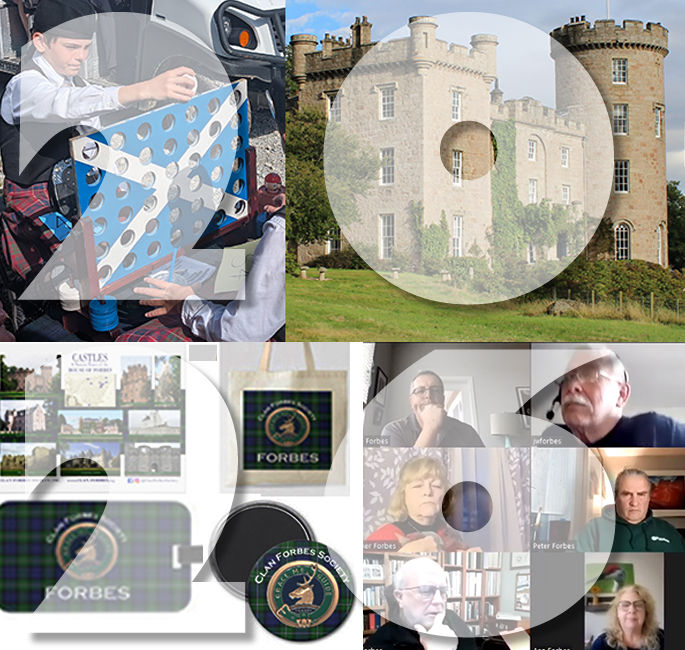Fourth Lord Forbes
- Bart Forbes

- Dec 20, 2020
- 3 min read
Alexander Forbes was born in about 1463 to William “Grey Willie” Forbes, 3rd Lord Forbes, and Gille Egidia Keith, daughter of Sir William Keith, 1st Earl Marischal. In order to secure the loyalty of the Forbeses, King James III agreed to the marriage between Alexander and his niece Margaret Boyd, the only daughter of his sister Princess Mary and Thomas, Earl of Arran.
Alexander succeeded his father William “Grey Willie” Forbes as the 4th Lord Forbes in 1483. The Forbes manuscript (as previously cited) notes that Alexander “was one of the greatest Hectors of his age.” His battle skills were tested during the Scottish civil war of the late 15th century.
In 1474, King James III arranged for his heir James (later James IV) to marry the English princess Cecily of York, daughter of Edward IV of England. This alienated many members of his own family and the Scottish nobility. As a result, James III faced major rebellions during his reign. The King failed to make dowry payments and England once again invaded Scotland in 1482, led by Cecily’s uncle Richard, Duke of Gloucester, and the James III’s younger brother, Alexander Stewart, Duke of Albany. He beat back the English forces but was later abandoned by many of the Scottish lords.
However, Alexander Forbes, 4th Lord Forbes, remained loyal to the King, since the Lords Forbes were the Crown’s Lieutenant in the northern districts. As William Forbes observed (“Preface,” Description of the Genealogie of the House of Forbes by Mathew Lumsden of Tilliekerne, 1580 and reprinted 1819): “Likewise it is clearlie at present to be made out by my Lord Forbes's Evidents That from the Year 1371 till Flowdonne in the Year 1513, the said Lord Forbes had the whole guiding of the of jis Majestie’s Affairs, both properties & Casualities Betwixt the Cairne of Mounte and the Bush of Kaitness…”

Therefore, Forbes fought on behalf of his King against the rebellious Scottish lords, led by the King’s son, at the Battle of Sauchieburn on June 11, 1488. When James III was killed in the battle, Lord Forbes rode throughout northern Scotland carrying the King's bloody shirt on his spear and attempted to rouse an army to avenge him. As described by William Drummond of Hawthornden (1585 – 1649) in History of the Reign of James the Fourth: “in the North Alexander Lord Forbes, a Man born neither to rest himself, nor suffer others, in Aberdeen and other Towns, on the Point of a Launce displayed the Shirt of the slaughtered King purpled with his Blood, inviting the Country, as by a Herauld, to the Revenger of his Murther…”
The account is also included in the preface of the Accounts of the Lord High Treasurer of Scotland, Volume I: “…when Lord Forbes displayed at Aberdeen the bloody shirt of the murdered monarch, numbers at once took up arms, eager to avenge his death. The Earl Marischal, the Master of Huntly, and Lord Forbes proceeded to concert measures with the disaffected in the south,”
Forbes succeeded in recruiting a large army but he laid down his arms after the defeat of the Earl of Lennox at Tillymoor, near Stirling. As reported by Drummond: “The Rumours of these Victories spread abroad; so amaz’d the Companies raised in the North by the Lord Forbes, and other his Confederates, that they changing their opinions with the Event of the Actions gave over further Prosecution or Desire of War, and every Man retired to his own Home.”
The young James IV pardoned Forbes and allowed the Lords Forbes to continue the administration of northern Scotland. Drummond noted “After which, by indifferent Friends, having fought a Reconciliation (it being more expedient to take them in my Policy than by Force) they were easily received into Favour: Amongst which was the Earl of Lennox and the Lord Forbes.”
John Stewart, 1st Earl of Lennox, rallied the former supporters of James III at Dumbarton Castle in October 1489. James IV trusted Forbes enough to appoint him with George Gordon, 2nd Earl of Huntly (circa 1441 – 1501), William Keith, 2nd Earl Marischal, (circa 1452 – circa 1527) and William Hay, 3rd Earl of Erroll, (circa 1449 –1507) to lead in the assault on Dumbarton October 11 and 12 of that year.
In order to more closely bind Forbes to the Crown, James agreed to his marriage to his cousin “Gracile” (French for “slender”) Margaret Boyd (circa 1468 - 1473), daughter of James’s sister Princess Mary Stewart of Scotland and Thomas Boyd, Earl of Arran. Lord Forbes died before May 6th, 1491, and, having no children, was succeeded by his young brother, Arthur.




Comments